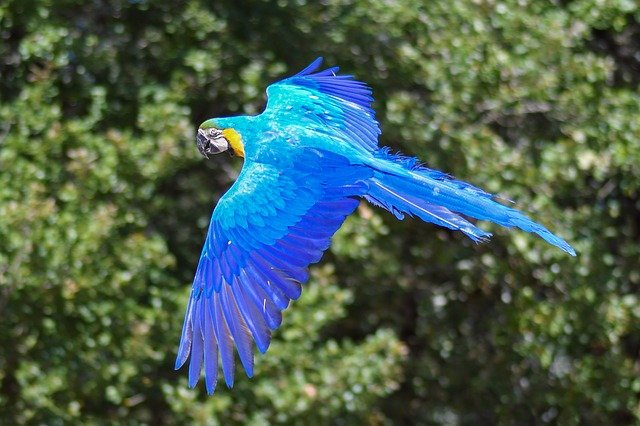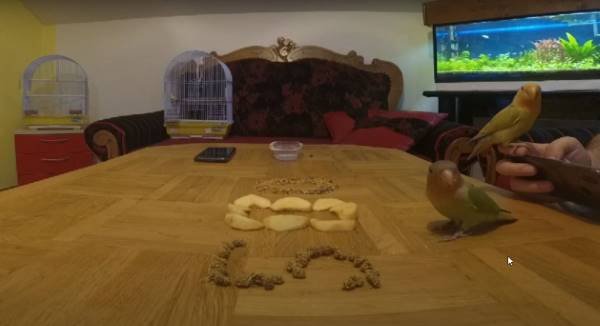Giving the best life for kids is the ultimate aim of any parent. And when those kids are our feathery friends, this desire takes the front seat as unlike our kids and four-legged pets, they are way too restricted in enjoying their life. Parrots are the most petted avians and unlike their wild counterparts, get lesser time outdoors. Hence, it is always the foremost concern of any parrot parent to offer them what they deserve: a free flight. And as the name suggests, there is no harness or support involved in it. So, the first question is: Is it even minutely possible?
Can a Pet Parrot Free Fly?
Many people would say ‘NO’ to this. But making your parrot fly outdoors unrestricted has been proven a reality by many determined parents. YouTube is full of many such videos. That said, there are also testimonies of many losing their bird forever. But the risk can be reduced to a minimum with apt measures. But there are always some prerequisites to make a parrot fly freely outdoors. So, let’s learn them to ensure them.
When can a Parrot Free Fly?
Before making a baby learn how to walk, he is made to stand first on surfaces like a bed for adaptation or he unintentionally learns to touch hands first if he falls. Such training tricks act as a buffer against mishappenings. Similarly, to make a parrot fly, one must always ensure that small training tricks are taught beforehand.
Wings aren’t clipped ever
Expecting a parrot to fly one day when he had always been clipped since birth is irrational. This is because he never happened to possess the mechanical skills to fly, navigate against wind speed, and escape the predators while in danger. Hence, if one happens to be an inherent admirer of seeing his birds fly.
If taught Step-up with positive reinforcement
For humans, positive reinforcement is simply offering a treat or saying nice words to the bird. But for parrots, that happen to have a toddler’s brain, it is an assurance that their human would always mean no harm and only love. Such trust is earned majorly during step-up training when the parrots are not forced or plucked at their toes or tugged at the belly to step up. Rather, he is left to take his time to bond with his human and let him eventually step-up with his will and then be rewarded for the same. Additionally, he should also not be tricked into doing so as soon the rewards would no longer matter to him. The right training helps the bird know that coming back to his owner would mean love and care and his favorite treat.
Age plays a role too
When in the wild, parrots subconsciously learn to fly just by observing their parents. But this is not the case indoors. And many studies have proved that the brain development of birds is altered if they aren’t made to fly at their natural age. Additionally, major bone loss happens with no or limited flying. That said, it doesn’t incapacitate the bird any time soon when it comes to flying. But a lot of physical and mental training would go into teaching him to fly. An important consideration here is also the species intended to be taught free flying. Where big parrots like African Greys and Macaws can easily join the flying club a little later owing to their higher IQ levels, it gets difficult for the smaller species like budgies and parrotlets.
Tips while teaching a Parrot to Free Fly
If all the prerequisites have been rightly followed, it’s time to teach the parrot to flex his wings outdoors.
Start with the indoors
The best and safest way to teach your bird flying is to make him do it indoors first. This way, you’ll also know if he’s ready to take that plunge and go solo outdoors. Think it just like parrot parents judge whether their chicks are ready to move out of the nest after the fledgling period is over. To do so, make the room/indoors parrot safe and teach him ways to come back to you or his companion in the cage. Additionally, he can also be taught to ‘come back’ after a flight and then start all over again. This way, he would never lose track when outdoors. Reward him after every success with treats and love.
Talk to the achievers
Before taking the bird out for his first free flight, it is always better to get as equipped as one can. And this not only means in terms of techniques but experiences of others who have tried their hands at it. Hear all the successes and the failures to know what to do and what not to do. Connect to various parrot forums, log onto various online training podcasts to have an idea of every possibility you might come across on D-day.
Read the body language of the parrot
When the little one is not ready, it is better not to force it on him. He might not gauge the speed of the wind, or any obstruction when not in the mood. And nothing worse than he might not even have the drive to get back to you by finding his way back, in case he gets lost up there. Hence, even while teaching him indoors, it is a must that he’s mentally prepared as this will help him memorize all the tricks you might impart.
Summing Up
Thinking of giving the best life to parrots by adopting them is a noble cause. This can be backed by the fact that the pet parrots enjoy a healthier and longer life than their wild counterparts. But the only thing they miss is taking free flights daily. And many pet parents have made this impossible-looking task a reality in recent times. All one needs to do is consider as many variables as possible during those special moments: speed of the wind, the safety of the location vis-a-viz predatory birds or animals, weather conditions for net few days in case the bird flies a little far of, presence of obstructions like man-made structures or cables, how near is the sunset, et al.





